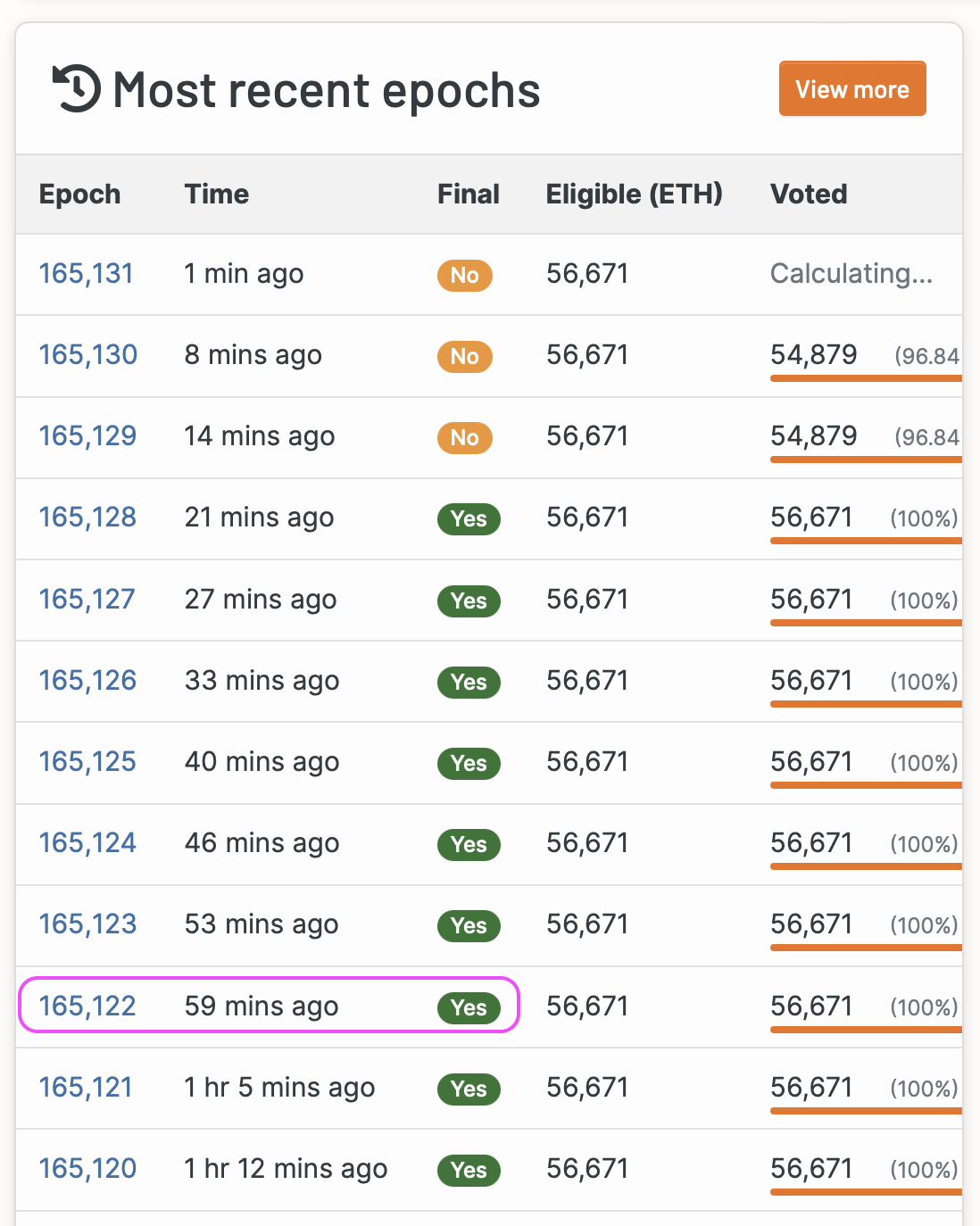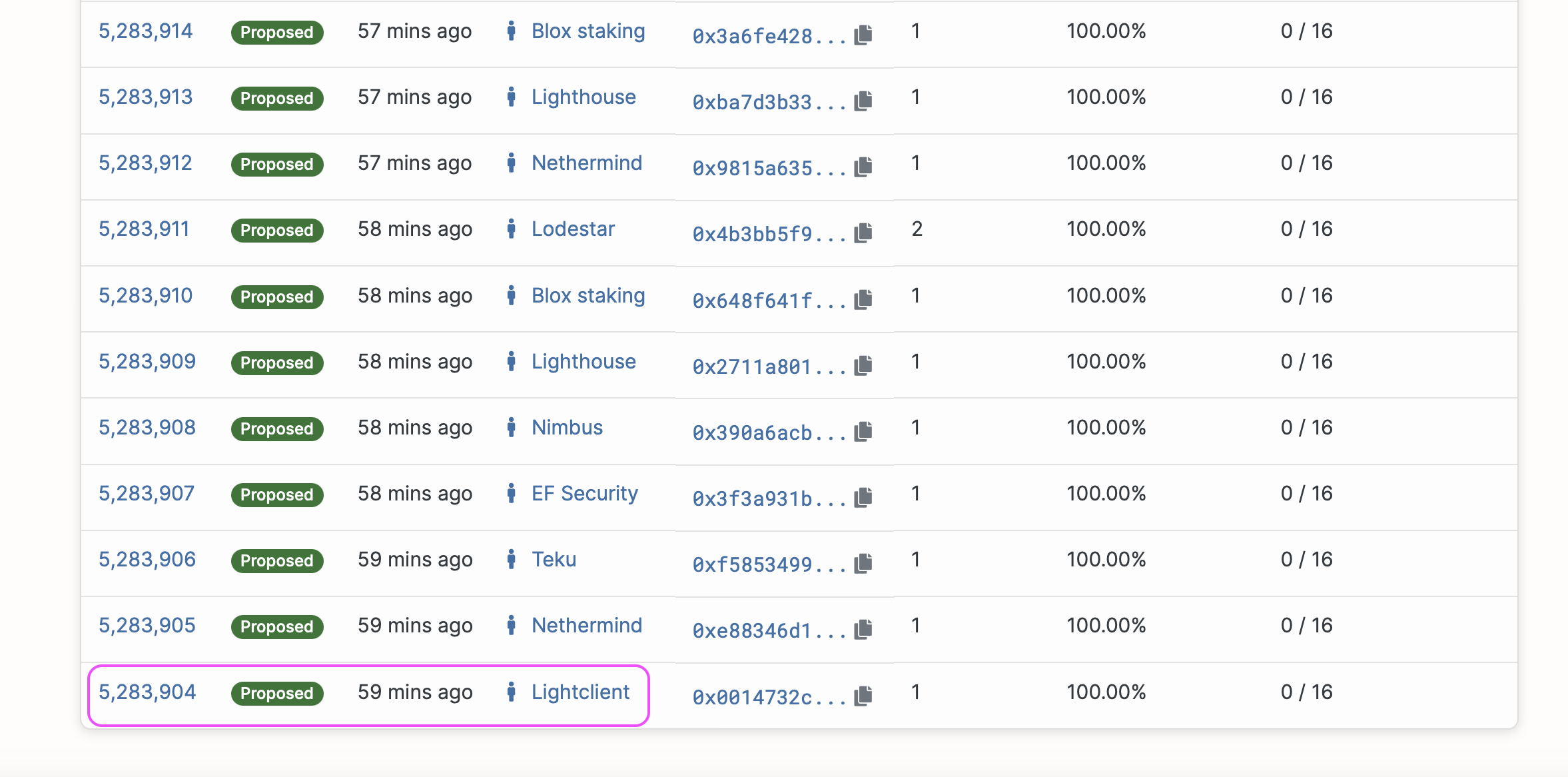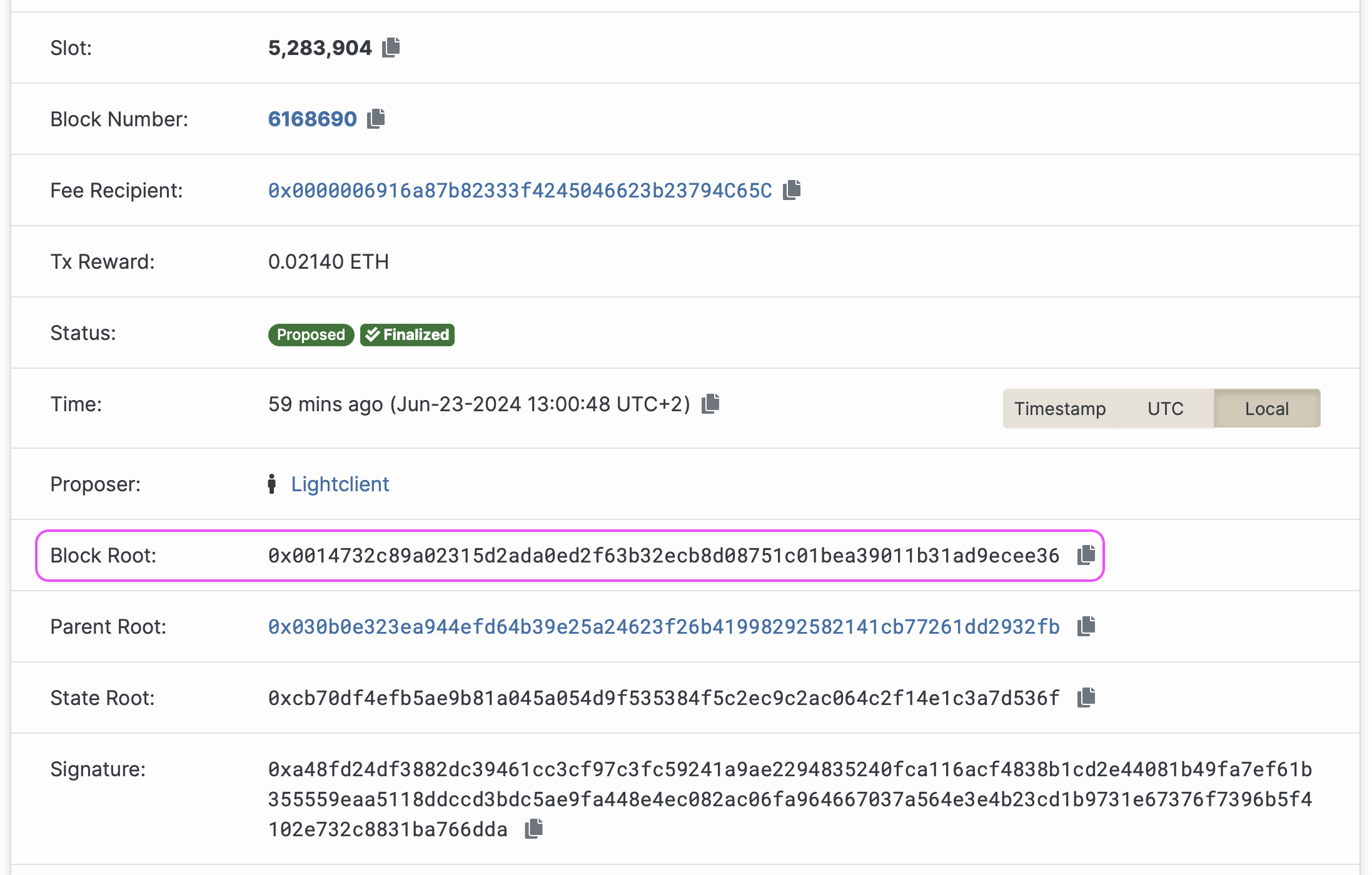Beacon light client
Last edited on June 24, 2025blsync is a beacon chain light client. Integrated within Geth, blsync eliminates the necessity of running a separate consensus client, making it ideal for use-cases that do not require full validation capabilities. It comes with very low resource requirements and can sync the beacon chain within seconds. blsync can be run in two modes: integrated or standalone. In standalone mode it is possible to use it for driving other execution clients.
Note
Important: blsync is not suitable for running a validator. It is also not recommended for nodes handling any amount of money or used in production settings due to its lower security guarantees compared to running a full consensus client.
Usage
Integrated mode
To run blsync as part of Geth, you need to specify a public HTTP endpoint and a checkpoint:
- Choose an Endpoint: Select a reliable and available endpoint from the Light Sync Endpoints list. These nodes are community-maintained.
- Specify the Checkpoint: Obtain a weak subjectivity checkpoint from a trusted node operator. The checkpoint should be less than 2 weeks old. Some light sync providers only support checkpoints from the last ~1 hour.
geth --beacon.api=<endpoint> --beacon.checkpoint=<checkpoint>
Checkpoint
A checkpoint is the block root of the first proposed slot of a finalized beacon epoch. It can be found manually or automatically depending on your trust requirements.
Retrieve checkpoint automatically
Retrieving the checkpoint and starting Geth at the same time is done using proceedure below.
Replace <endpoint> with the chosen trusted light sync provider from the list of endpoints. The following command will run Geth with the integrated blsync. Ensure jq is installed.
BEACON=<endpoint> geth --beacon.api=$BEACON --beacon.checkpoint=$(curl -s $BEACON/eth/v1/beacon/headers/finalized | jq -r ".data.root")
Manually find a checkpoint
A checkpoint can also be obtained manually. The easiest is to use beaconcha.in and cross check it with another provider like beaconscan:
- Visit beaconcha.in.
- Navigate to the latest finalized epoch that is ideally 1 hour old.

- Open the epoch details and find the first proposed slot at the end of the page.

- Compare the block root for the slot against an another source. Verify they are equal.
- Copy the block root field.

- Fill in the argument for the --beacon.checkpoint flag with block root.
Example
geth --beacon.api=<endpoint> --beacon.checkpoint=<block root>
Running blsync as a Standalone Tool
As mentioned before, blsync can be run in standalone mode. This will be similar to running a consensus client with low resource requirements and faster sync times. In most cases Geth users can use the integrated mode for convenience. The standalone mode can be used e.g. to drive an execution client other than Geth.
Installing
Depending on your installation method either you have access to the blsync binary or you will have to build it from source by:
go build ./cmd/blsync
Running
Blsync takes the same flags as above to configure the HTTP endpoint as well as checkpoint. It additionally needs flags to connect to the execution client. Specifically --blsync.engine.api to configure the Engine API url and --blsync.jwtsecret for the JWT authentication token.
To sync the Sepolia network in this mode, first run Geth:
geth --sepolia --datadir light-sepolia-dir
The logs will indicate the Engine API path which is by default http://localhost:8551 and the path to the JWT secret created which is in this instance ./light-sepolia-dir/geth/jwtsecret. Now blsync can be run:
blsync --sepolia --beacon.api https://sepolia.lightclient.xyz --beacon.checkpoint 0x0014732c89a02315d2ada0ed2f63b32ecb8d08751c01bea39011b31ad9ecee36 --blsync.engine.api http://localhost:8551 --blsync.jwtsecret light-sepolia-dir/geth/jwtsecret
INFO [06-23|15:06:33.388] Loaded JWT secret file path=light-sepolia-dir/geth/jwtsecret crc32=0x5a92678
INFO [06-23|15:06:34.130] Successful NewPayload number=6,169,314 hash=d4204e..772e65 status=SYNCING
INFO [06-23|15:06:34.130] Successful ForkchoiceUpdated head=d4204e..772e65 status=SYNCING